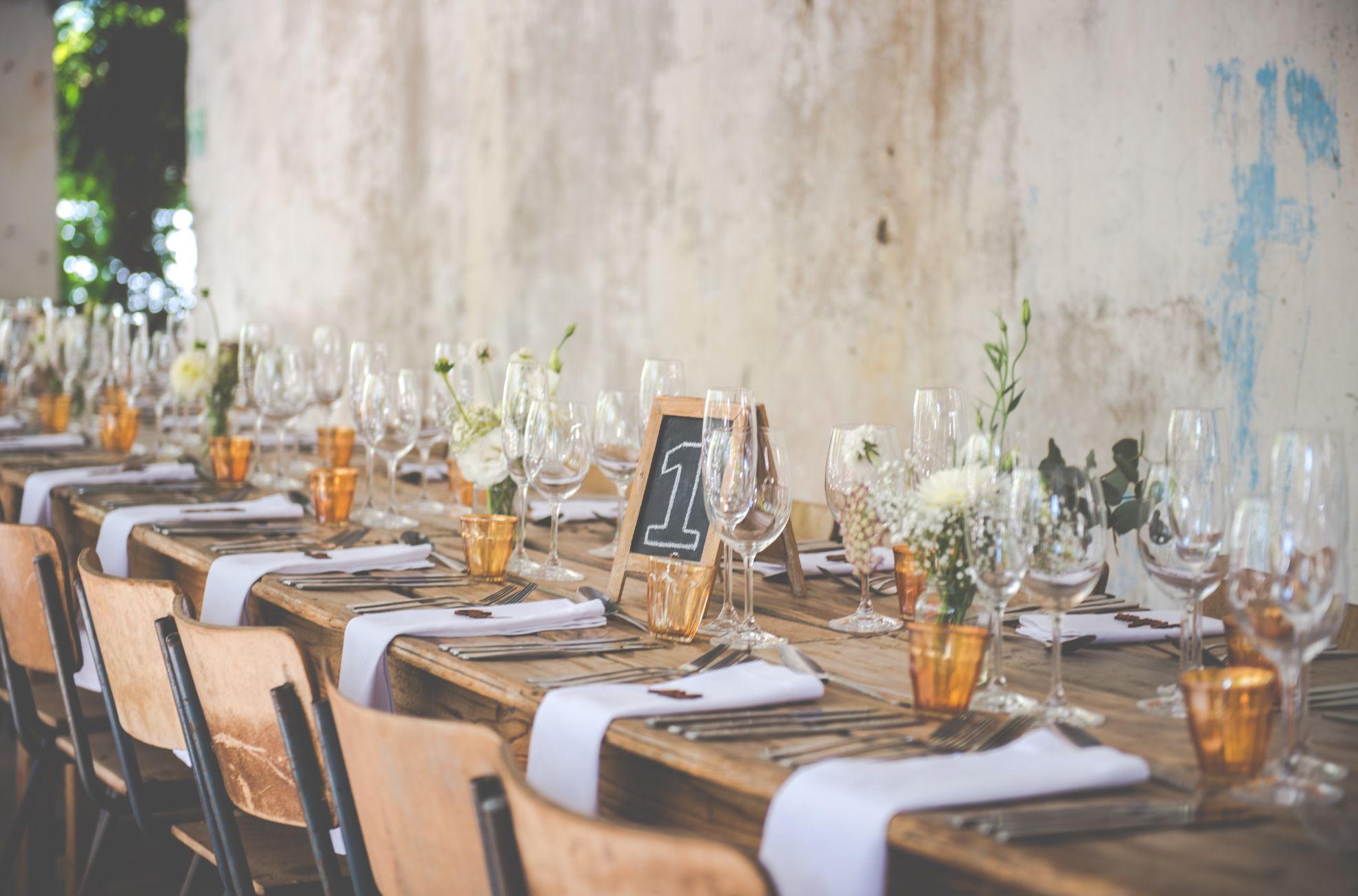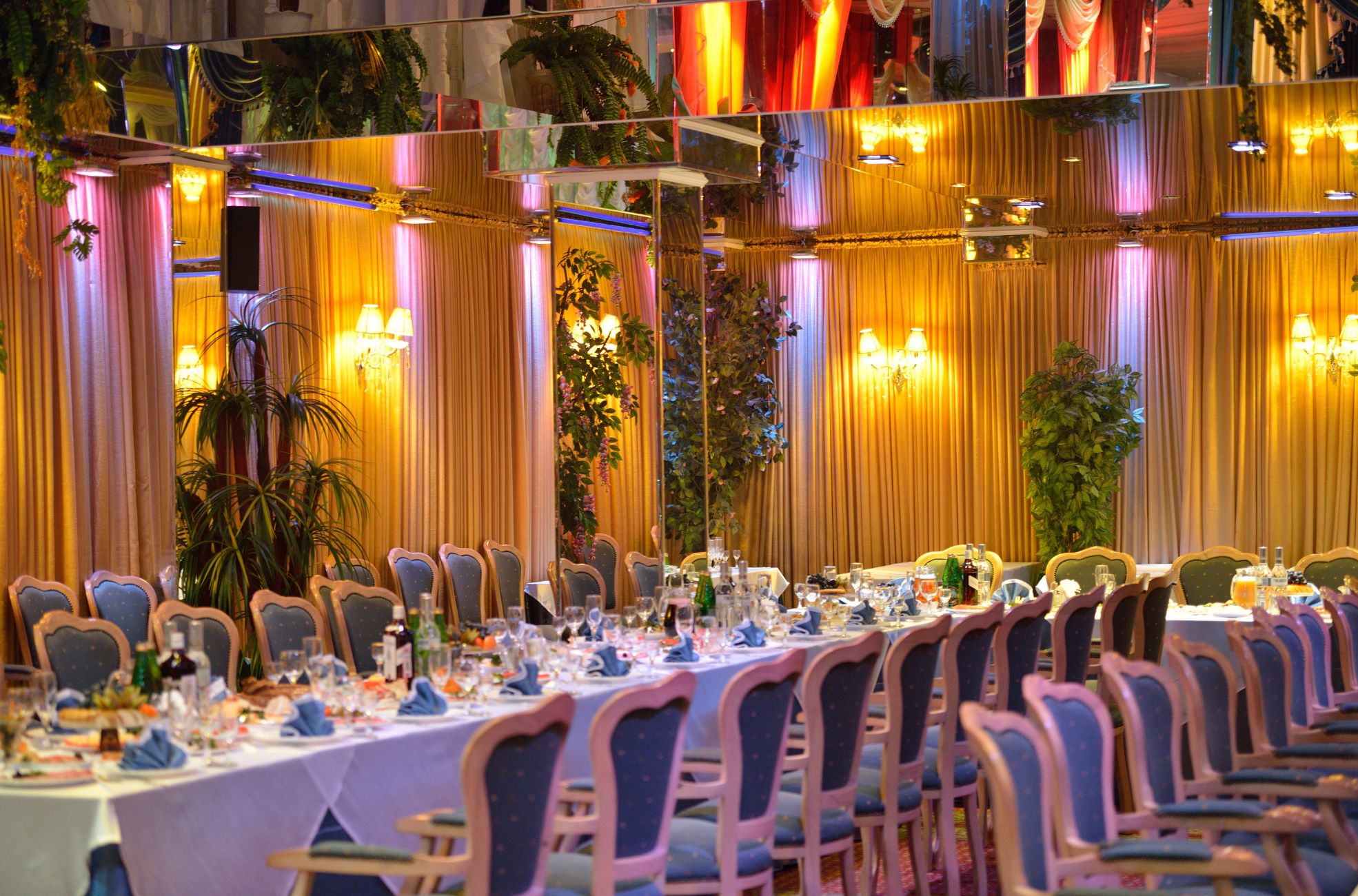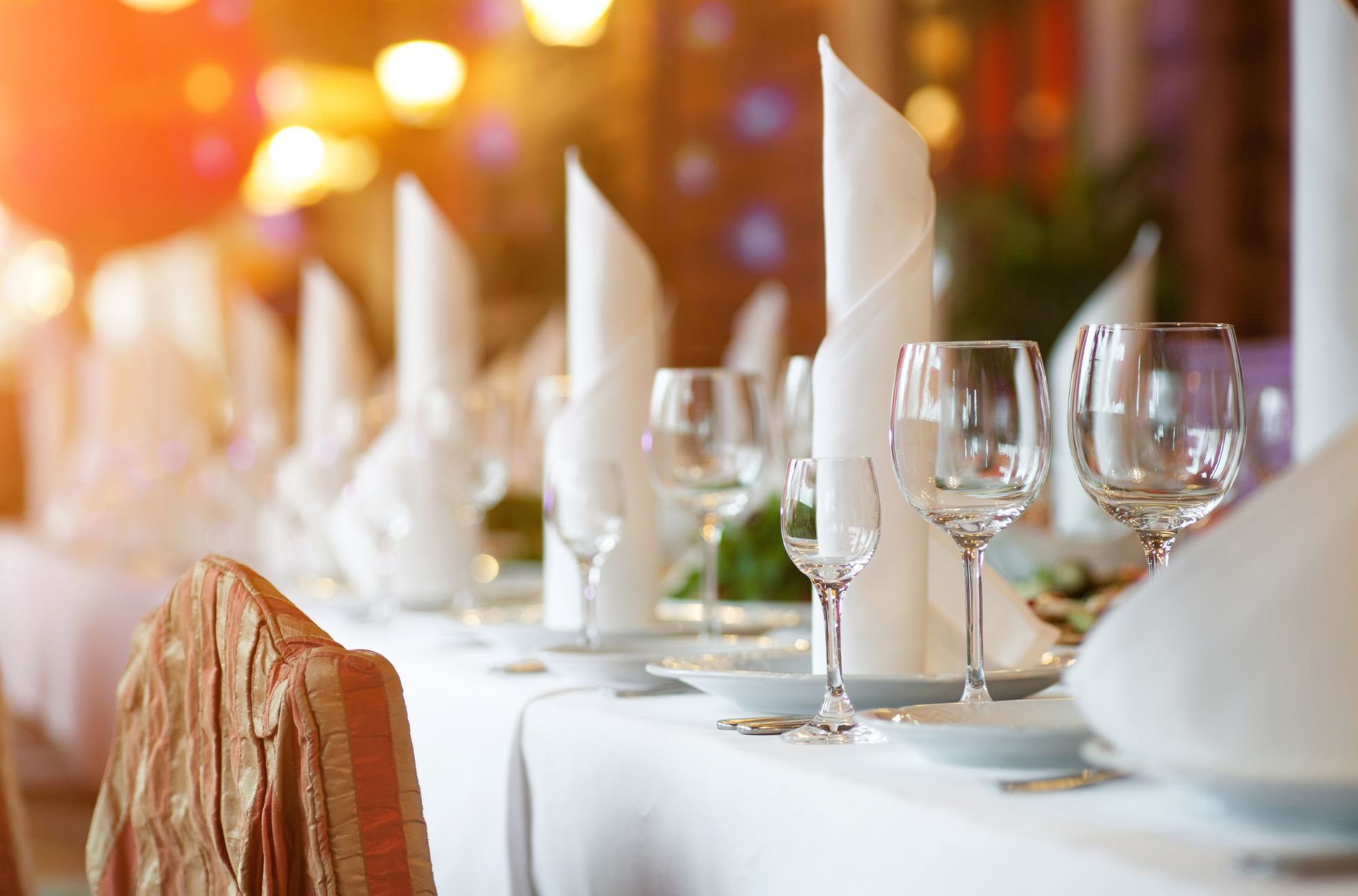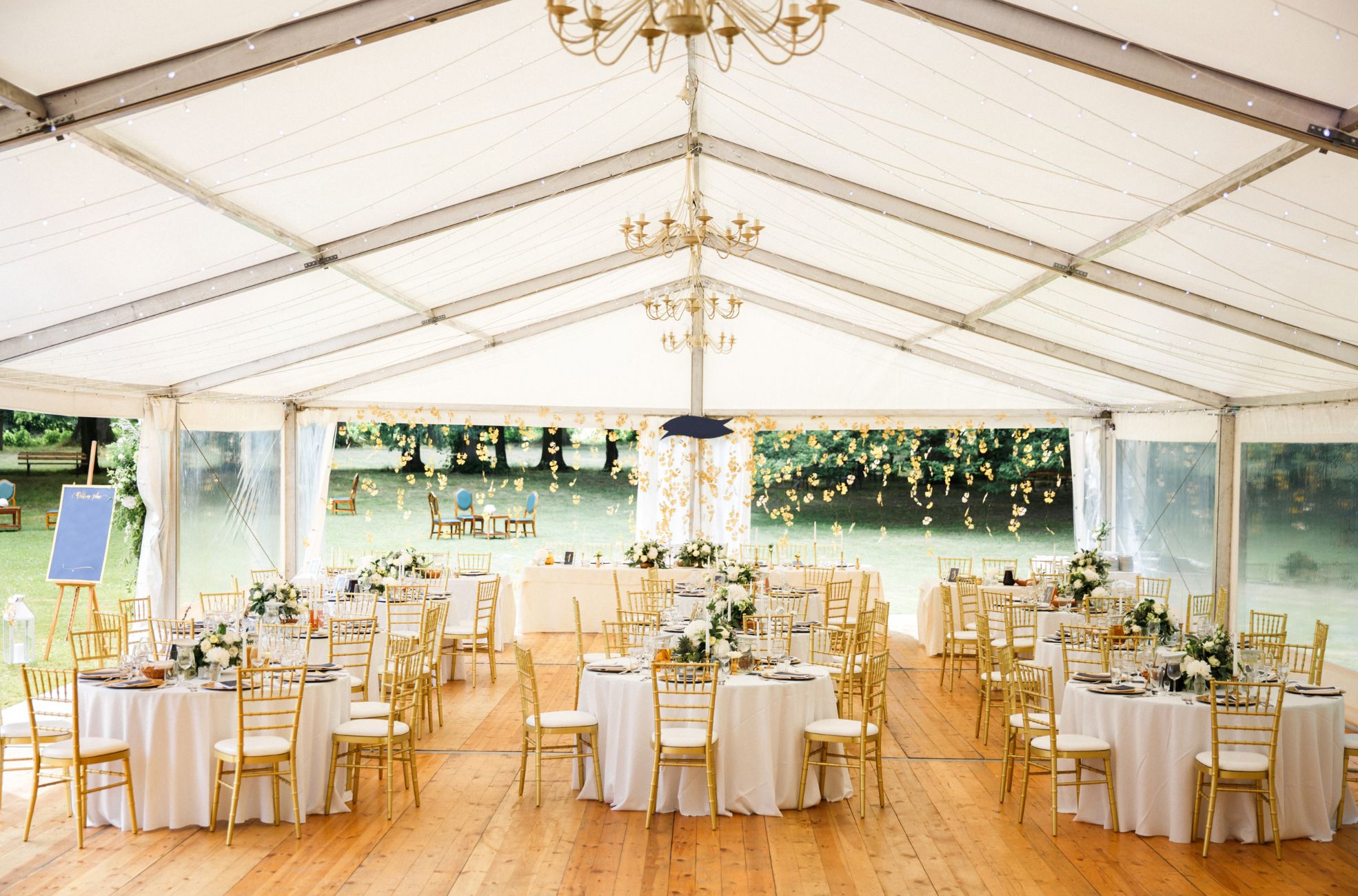Banquet-style seating is an elegant and efficient arrangement that caters to various events, from festive weddings to formal conferences. This seating configuration, characterized by its round tables and communal atmosphere, is designed to facilitate conversation and interaction among guests. Ideal for social and professional gatherings, it allows attendees to enjoy meals and discussions in a comfortable setting that promotes sociability and inclusivity.
Planning the perfect banquet-style seating involves careful consideration of venue space, table selection, and guest comfort—all aimed at maximizing the event’s potential for success. Whether you’re looking to understand its historical roots or seeking tips on optimizing the layout for your next event, we give a comprehensive guide on arranging banquet-style seating to create a memorable experience for all participants.
What Is Banquet Style Seating?
Banquet-style seating is popular for various social gatherings and events, including weddings, conferences, gala dinners, and business meetings. This seating format typically involves round tables spread throughout the venue, each accommodating 8 to 10 guests. The setup is designed to create a friendly atmosphere where you can converse and enjoy the event with others who share common interests or project goals.
The versatility of banquet-style seating isn’t limited to public venues; it’s also a preferred option in residential settings. In homes, banquet seating often refers to a bench placed against a wall or in a tight space paired with a table and additional chairs. This configuration is especially useful in dining areas where space is premium, providing a comfortable and space-efficient dining solution.
Event planners and home designers appreciate the dual advantages of banquet-style seating: it maximizes floor space. It enhances the comfort and sociability of dining experiences.
Historical Context and Uses
The concept of banquet-style seating has its roots in the hospitality sector, where it has been a staple for centuries. Its development can be traced back to the 18th century when the French introduced the first modern restaurants with individual tables in a shared space. This concept influenced the American dining scene, where the preference for private box seating in churches and opera houses was adapted for the restaurant environment. It is now a common preference in Australian restaurants and dining venues.
Comparison with Other Seating Arrangements
Banquet-style seating is known for its egalitarian nature when compared to other seating styles. Unlike family-style seating, which features long tables with a designated head, the banquet seating style allows all guests at a table to engage in conversation without the constraints of distance or hierarchy. This is in stark contrast to theater seating, where guests are arranged in rows facing forward without tables, making it less suitable for dining and interaction.
Cabaret seating is similar to banquet style in that it uses round tables. Still, it’s unique in that guests are seated on only one side of the table to ensure an unobstructed view of the stage or presentation area. Cocktail events, by contrast, encourage guests to mingle with highboys scattered around the venue, allowing them to stand and socialize freely.
Other arrangements such as herringbone seating, horseshoe setup, classroom arrangement, and hollow square serve specific functions, particularly in contexts where the focus is directed towards a central focal point, or collaboration is critical, as in business meetings. Herringbone seating positions guests towards a performance area, while a horseshoe setup is ideal for presentations. Classroom seating includes tables for note-taking, and a hollow square is conducive to discussion and the use of collaborative tools.
Family-style dining is a popular alternative to banquet style, often used in combination with other types of seating arrangements to accommodate different event requirements. Each seating style has its own unique benefits. Still, banquet-style seating is particularly notable for its ability to balance space efficiency with the social dynamics of group interaction.

Planning Your Banquet Seating
Assessing Venue Space
When organizing a banquet, evaluating the venue’s dimensions is crucial. Pay attention to any architectural elements that might influence your layout. The room’s shape may dictate whether round or rectangular tables are more appropriate.
Round tables facilitate conversation in spaces with unconventional shapes or when maximizing seating capacity is a priority. Conversely, rectangular tables may be more suitable for elongated spaces or areas with extensive wall space. Remember to account for focal points such as stages, dance floors, or displays that could serve as anchors for your arrangement.
Calculating Table and Guest Capacity
The next step is determining the number of tables and attendees the venue can accommodate. For round tables, the standard diameters are 60 and 72 inches, with the latter allowing for a more generous crescent configuration if desired.
Rectangular tables come in various lengths, with the 60-inch model seating six, the 72-inch accommodating six to eight, and the 96-inch suitable for eight to ten. A standard width of 30 inches is typical for banquet tables, and planners should allow approximately five feet between them to ensure adequate space for seating and circulation.
To ascertain the maximum number of tables for the available space, consider the ‘clear seating’ dimensions, which represent all the different areas within the room that can be utilized for seating.
Essential Considerations for Layout
Optimizing the layout is crucial for guest mobility and comfort, typically requiring an 11-foot distance from the center of one 72-inch round table to the next.
Utilizing a layout generator can simplify the planning process, providing a visual representation of potential arrangements. This tool allows for experimentation with various configurations and adjustments throughout the planning stage.
Incorporate elements such as buffet stations, a head table, entertainment areas, and beverage stations into your layout to ensure a seamless event flow and efficient use of space.
Ensuring an inclusive atmosphere is paramount, particularly for events honoring specific individuals who should be able to interact with attendees easily. Whether the setting is a traditional banquet hall or a more unconventional space, strategic planning and the right resources are instrumental in achieving an effective seating arrangement.
Types of Banquet Tables
Banquet tables are essential for various special occasions, including wedding receptions, catered galas, and luncheons. They’re typically designed to be foldable, which allows for easy movement and storage. You’ll find them in different shapes and sizes, each offering unique advantages and considerations when you’re planning an event.
Round Tables: Pros and Cons
Round tables are often the go-to for events, with the 60 inch round table being a particularly popular size. They can fit anywhere from two to ten guests, with diameters ranging from 24 inches to 72 inches. A 60 inch round table comfortably seats eight guests, making it a great choice for encouraging conversation, as everyone is equidistant from the center, making it easy to chat.
However, round tables can be less space-efficient than other-shaped cocktail tables. They usually need more room than rectangular tables, which can reduce the number of guests a venue can hold.
Rectangular Tables
Rectangular tables are another favorite for banquet seating. They come in various lengths, with six and eight feet being the most common sizes. The standard width of bar tables is 30 inches, but options up to 48 inches wide are available for family-style dining.
These tables can seat six to ten guests, with the longer eight-foot versions fitting up to four guests on each side and one at each end. One of the perks of rectangular tables is their ability to be joined end-to-end. This creates larger, continuous seating arrangements, which is handy for larger groups or creating a communal dining vibe.
Combining Different Table Shapes
Event planners often mix and match different table shapes to suit the diverse needs of an event. For instance, you might see round tables for guest seating. In contrast, rectangular tables could be used as buffet stations or display areas for gifts or desserts. Digital planning tools can assist in visualizing and organizing the table layout within the space.
When mixing various table shapes, it’s important to consider the room’s flow and ensure guests can move around comfortably. It’s also key to pick table linens that match the other tables” dimensions and to choose chairs that are the right height, enhancing both the look and comfort of the banquet setup.

Decorating Banquet Style Tables
Choosing a Theme and Color Scheme
Selecting an appropriate theme and color scheme is essential for setting the right tone for your banquet. The theme should align with the event’s purpose and the attendees’ expectations, influencing all subsequent design decisions. It’s crucial to take into account the venue’s existing aesthetics and any constraints it may present.
A well-chosen color palette, typically consisting of three to five colors, can effectively set the event’s atmosphere and enrich the thematic experience. Your primary color, supported by secondary shades and an accent color, should be selected with an eye for visual harmony.
Consider the time of year, the natural setting, and the branding associated with the event when choosing your colors. For instance, a combination of brown, green, and cream can suggest a naturalistic theme, ideal for an event that aims to evoke the essence of the outdoors. Consistency in applying your chosen colors across all elements, from the initial invitations to the table linens, is crucial for creating a unified and impactful experience.
Table Centerpiece Ideas
Centerpieces serve as focal points on banquet tables, enhancing the theme and drawing attention. They can vary from grand floral displays that reflect the chosen colors to creative arrangements that feature branding or cultural motifs. The design of centerpieces should not only complement the tableware but also allow for clear sightlines and easy conversation among guests.
Options for centerpieces include grand vases, artistic creations, or understated candle arrangements, all chosen to align with the event’s style and contribute to the atmosphere.
Linen and Flatware Coordination
The coordination of linens and flatware plays a crucial role in the visual impact of the banquet. Tablecloths and runners safeguard the tables and act as a medium for expressing the color theme. The fabric and color of these linens should align with the event’s palette, adding layers and texture to the tablescape.
Dinnerware, silverware, and napkins extend the opportunity to infuse style and color into the setting. These components should be in sync with the overall design by echoing the primary colors or introducing contrasting shades for visual interest.
Incorporating the color theme into the seating cards and even the culinary offerings can enhance the thematic immersion. Choosing dishes and drinks with vibrant hues can appeal to the senses and emphasize the theme. Additionally, lighting can be adjusted to match the color scheme, strategically placing colored lights or gels to cast an ambient glow that accentuates the atmosphere. By carefully coordinating these aspects, banquet-style seating can be transformed into an engaging and memorable environment for all attendees.

Maximizing Guest Comfort and Interaction
Optimizing Seating for Networking
Banquet seating is conducive to networking, particularly at social functions where interaction is key to the experience. Strategically seating individuals with shared interests or professional backgrounds can foster engaging discussions and potential partnerships. However, it’s important to avoid the pitfall of isolated groups by strategically positioning individuals of influence or honorees in central locations to encourage broader engagement. When selecting centerpieces, opt for designs that enhance the decor without impeding sightlines or conversation.
Managing Guest Flow and Movement
Efficient navigation through the event space is essential for a positive guest experience. Thoughtful table placement and clear directional signage can facilitate smooth transitions between different areas of the venue. Amenities such as charging stations and accessible Wi-Fi contribute to guests’ convenience, allowing them to remain connected and recharge as needed. Catering to diverse dietary preferences and offering hydrating beverages like fruit-infused water can demonstrate attentiveness to guest comfort, particularly for those adjusting to the local climate or recovering from travel.
Accessibility and Accommodating Special Needs
Inclusive event planning extends beyond compliance with regulations; it reflects a comprehensive approach to hospitality. Digital accessibility, proactive communication, and a knowledgeable staff are integral to creating an accommodating atmosphere. Tables and service counters should be accessible to guests using wheelchairs, and seating options must cater to a variety of needs, including chairs with supportive armrests for those requiring assistance.
Offering pre-cut meals that are served simultaneously with other guests can promote a sense of inclusion. For multi-day events, ensuring that accessible accommodations are available is essential. Engaging with guests who use wheelchairs at eye level by either sitting or stepping back is a respectful practice.
For outdoor gatherings, considerate touches like providing insect repellent can enhance comfort. Small gestures, such as aromatic room sprays or parting gifts, can leave a lasting impression, contributing to a memorable and inclusive event experience.
Elevate Your Event with Banquet Seating
Banquet-style seating is more than just a functional layout; it’s a strategic choice that can elevate the dynamic of any event. It balances the need for space efficiency with the innate human desire for connection, making it an enduring favorite for event planners and hosts. Whether for a grand gala, an intimate wedding, or a corporate workshop, carefully orchestrating round tables, flowing linens, and thoughtful centerpieces set the stage for shared stories and lasting memories.
At its heart, the success of banquet seating lies in the details—the mingling of colors, the soft light reflecting off silverware, the ease of movement, and the inclusivity of the space. Each element works in concert to create an inviting environment. By embracing the art of banquet-style seating, your event is assured not just of a great setup but of creating a truly communal and celebratory experience.







